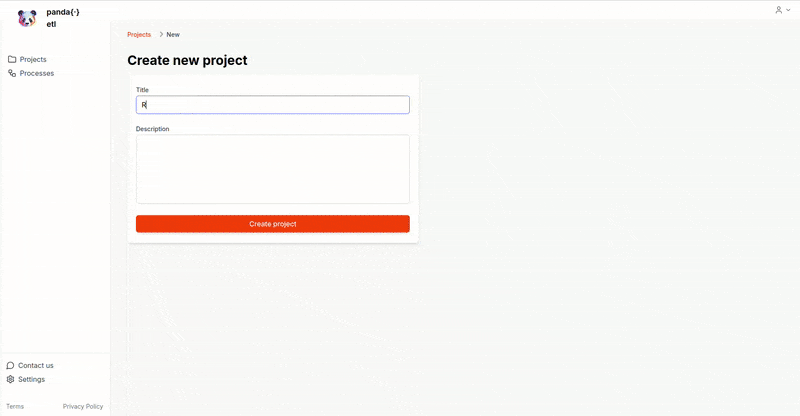Document-to-data platform for Real Estate & NPL
No-Code solutions for NPL & Real Estate document challenges

Last week, over coffee, an old friend who works as an assistant to the general director of a successful non-performing loans (NPL) operator painted a vivid picture of the daily grind in the industry. "You wouldn't believe the mountain of documents we wade through," he sighed, rubbing his temples. "Each property tied to a loan is like a puzzle with pieces scattered across dozens of pages. We're talking about appraisals, auction notices, cadastral records – all in these dense, often barely legible PDFs. And the kicker? We need to extract specific data points from each one, sometimes for multiple properties in a single file. It's a nightmare of manual data entry that eats up our days."
As my friend spoke, I could almost see the stacks of virtual and physical paperwork piling up on his desk. His frustration was palpable, and it got me thinking: there had to be a better way to handle this crucial but cumbersome aspect of real estate and NPL operations.
Table of Contents
- Too much paper: why real estate data is hard to get?
- Handling property documents: a no-code solution for real estate
- From court PDFs to usable data: Italian real estate auctions
- Property data extraction: the tech behind efficient real estate document operations

Too much paper: why real estate data is hard to get?
NPL operators often specialize in real estate operations, as properties used as collaterals can be a source of profit. However, the process involves an overwhelming amount of manual work, particularly when dealing with real estate appraisals in public auctions.
The challenges include:
- Extracting specific data from lengthy, messy PDFs
- Dealing with OCR documents that are impossible to copy and paste
- Managing multiple records for a single collateral
- Handling multiple lots with one or more associated properties
- Assessing occupancy status and required renovations
- Navigating through clustered data on property conditions
The hard reality? Hours upon hours of reading and manual data entry. To address these challenges, we've developed a no-code data platform designed specifically for real estate document processing.

Handling property documents: a no-code solution for real estate
To address these challenges, we've developed a no-code data platform designed specifically for real estate document processing. This tool aims to alleviate the pain points experienced by NPL operators, real estate professionals, and anyone dealing with complex property documents.
Our platform offers:
- User-friendly interface: A simple drag-and-drop drive with document browsing capabilities
- Flexible extractions: Describe what you need in natural language, and get multiple records that can be easily adapted to new projects
- Transparent results: View extractions in a familiar spreadsheet format, with the ability to click on cells and see highlighted source text
- Easy exports: Download your data as spreadsheets for further analysis
These features allow non-technical users to efficiently process complex real estate documents without requiring specialized IT skills.

From court PDFs to usable data: Italian real estate auctions
Let's examine a specific use case: extracting data from real estate appraisals prepared by court-appointed experts for properties to be sold in Italian public auctions. These documents are publicly available at https://pvp.giustizia.it/pvp/it/lista_annunci.page.
These appraisals are complex documents, often running to hundreds of pages, filled with crucial information about properties heading to auction. Manually extracting this data is time-consuming and prone to errors. Our platform simplifies this process by automatically extracting over 20 key data points, including:
- CTU (Technical Consultant) name and signature date
- Lot and property numbers
- Location details (municipality, province, address)
- Property descriptions and measurements
- Legal information (foreclosure registration date, ownership share for sale)
- Occupancy status
- Cadastral details
- Property type and intended use
- Regulatory compliance information
By automating this extraction process, our platform allows NPL operators and other real estate professionals to quickly gather essential information from these court appraisals.

Property data extraction: the tech behind efficient real estate document operations
Our no-code data platform leverages advanced natural language processing and machine learning algorithms to transform complex real estate documents into structured, actionable data. Let's dive deeper into how each feature works to make this process efficient and user-friendly:

- User-friendly interface: The drag-and-drop drive simplifies document upload and management. Users can easily browse through their documents, organize them into folders, and select which ones to process. This intuitive design ensures that even those with minimal technical skills can navigate the platform with ease.
- Flexible extractions: Users can describe their data needs in natural language, much like explaining to a colleague. For example, you might input "property address, lot number, estimated value". The system interprets these instructions and creates extraction rules accordingly. These rules can be saved and reused for similar projects, saving time and ensuring consistency.
- Transparent results: The extracted data is presented in a familiar spreadsheet format, but with added functionality. Users can click on any cell to see the exact location in the source document where that information was found. This feature provides an easy way to verify the accuracy of extractions and quickly correct any errors.
- Easy exports: Once the data is extracted and verified, users can download it in various spreadsheet formats (e.g., CSV, Excel) for further analysis or integration with other systems. This seamless export process ensures that the extracted data can be easily incorporated into existing workflows.
By combining these advanced technologies with a user-centric design, we've created a tool that not only extracts data efficiently but also integrates smoothly into existing real estate workflows.
